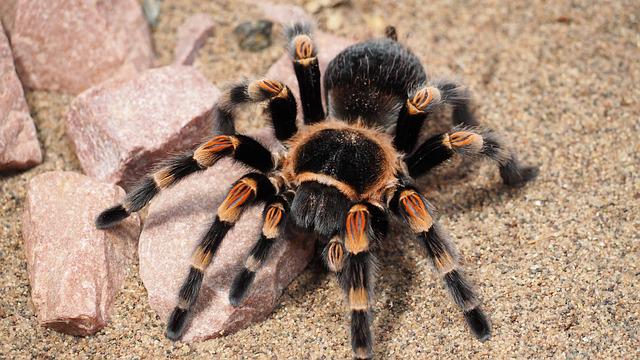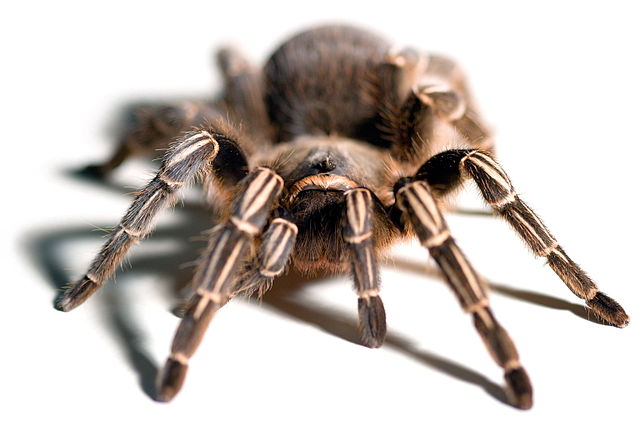Tarantula Feeding – What, When, And How Much to Feed?
Adopting a tarantula and taking good care of it, is a quite different experience than having commonly kept pets like cats, or dogs. With the other animals, since they have been kept as pets for so long and so often, everything about their needs and maintenance is common knowledge. But, if you have decided to adopt a tarantula or are already a tarantula owner, taking care of its everyday needs can be a cause of anxiety for its new owners, and sometimes even for those who have had them for quite some time.
In this article, we will go over all the frequently asked questions about feeding a tarantula. So, the next time your tarantula starts behaving weirdly, you can rest assured that you haven’t starved your poor tarantula or overfed it.

What Do Tarantulas Eat?
No matter what species of tarantula you own, whether it’s one of the common types like Mexican red knee, Chilean rose, pink toe tarantula, or one of the rare species of tarantula like lava spider, giant blue bloom, or Trinidad copper top, the good thing about their diet is that all of them eat the same thing. You don’t have to worry about feeding different species, or different things; although, their diets do vary with their age group.
Tarantulas’ diet generally consists of insects like crickets, fruit flies, mealworms, silkworms, grasshoppers, beetles, and super worms. Tarantulas can also be fed wax worms if they are showing signs of malnourishment, as wax worms are rich in fats.

Do tarantulas need water?
Tarantulas need water in their enclosure, as they sometimes do drink water. While keeping water in their cage keep in mind that your pet can drown in the water bowl if it’s too deep. So, use a bottle cap or specifically buy a water dish designed for tarantulas, which shouldn’t be more than half an inch deep. Remove their water dish daily and refill it with clean water before placing it back.
How Often Do Tarantulas Eat?
Tarantulas are fairly low-maintenance pets; they do not need to be fed as regularly as many of the other commonly kept animals. The frequency of their feeding schedule depends primarily on which stage of life they are at that point.
How Often To Feed a Spiderling (Sling)
Baby tarantulas are called spiderlings or slings, they are at the stage where they grow rapidly if provided with a sufficient diet. Most tarantula experts believe that feeding slings, twice or thrice a week is the best option, as slings are fragile and more prone to malnourishment and dehydration than their adult counterparts.
Some owners express their concern that they might end up overfeeding their spiderlings, but unlike other small animals, it hasn’t been proven that spiderlings can be over-nourished.
How Often to Feed a Juvenile Tarantula?
Juvenile tarantulas are not so frail as slings and are not growing at the same rate they did when they were younger, thus, they do not necessarily have to be fed quite so often as the spiderlings. Feeding them twice a week is more than enough.
How Often to Feed an Adult Tarantula?
Adult tarantulas do not need to be fed regularly. Feeding them once every week or two should be enough; although, some species of tarantulas do eat more frequently than that. You should try a trial-and-error approach while feeding your adult spider, drop in their food once every week then twice a week, and so on, and observe whether it consumes the other meal or ignores it. Do not forget to remove the uneaten insect within a day, as it may harm the tarantula or cause unnecessary anxiety, making your tarantula irritable.
Overeating can be an issue with adult tarantulas, keep an eye on their abdomen, if it’s too swollen that the tarantula is having trouble walking, you are overfeeding your tarantula, and need to pull back on its feeding schedule, while if your hairy pet’s abdomen seems shrunken, it is under-fed, and you need to increase the frequency of its feeding.
When To Feed Tarantula?
Tarantulas are nocturnal animals, so they usually stay in their burrows during daylight and come out at night to hunt, so try feeding them in the evening, and remove any leftover food from their enclosure the next day.
How much to feed a Tarantula?
The portions of their food, like the frequency of their feeding, depend entirely on the age group of your tarantulas. Some owners are curious about, what size of insects to feed their pet, the size of the insect being fed should be about the width of your tarantula’s abdomen, or half the length of its leg; although, it does not matter whether you give them one large insect or several small insects, as long as you are not feeding them anything larger than the sizes mentioned earlier.
Some owners drop several small insects in the cage at a time to compensate for not having a large insect to feed their tarantula, but this practice may cause undue stress to your pet, it’s much better if you feed those small insects to your tarantula over a few days or try to find larger insects for them.
Size Of Prey for Slings
Finding small enough insects to feed your tiny slings might prove to be hard, so, you should feed your baby tarantulas dead insects or cut a larger insect into small pieces and place them in the sling’s enclosure.
Don’t put live insects in their cage, no matter how small, as the spiderlings are quite delicate.
Size Of Prey for Juvenile Tarantula
A juvenile spider having a leg span of two-inch or more can be fed tiny live insects like pinhead cricket. At this stage, do not put more than one live insect in their enclosure, as your tarantula can barely deal with one insect at a time.
Size Of Prey for Adult Tarantula
For adult tarantulas, even though they can catch and eat larger prey like crickets, grasshoppers, and worms, some of them prefer to eat small insects only. When feeding your adult tarantula, start with smaller size insects and increase the insect’s size and observe that the tarantula is comfortable catching the prey and is not having a hard time at the hands of the insect.

Some Points to Remember When Feeding Your Tarantula
- When dropping a live prey in your tarantula’s cage, you can use tongs, although you do not need to dangle the insect in front of the tarantula, just drop it in the cage and let the tarantula catch it on its own.
- When the tarantulas are about to molt, they become lethargic and don’t eat their food, during this time you should not feed them live prey as it may harm the vulnerable tarantula, whose skin remains sensitive for up to two weeks even after molting.
- Occasionally, a tarantula won’t eat even if it is not molting, this should not be a cause of concern for you as often after a big meal, tarantulas don’t eat for some time, weeks even.


